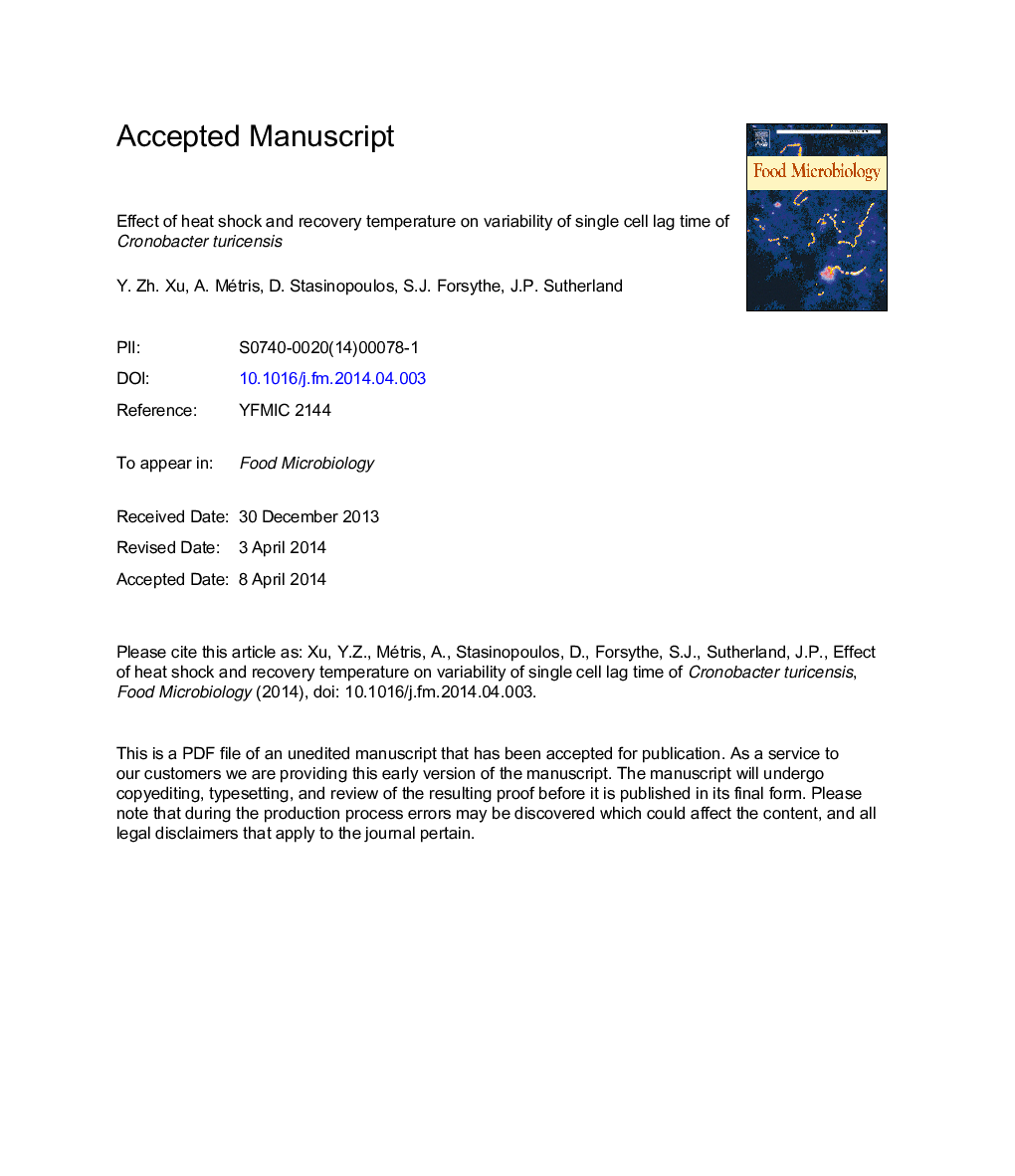| Article ID | Journal | Published Year | Pages | File Type |
|---|---|---|---|---|
| 6288630 | Food Microbiology | 2015 | 36 Pages |
Abstract
The effect of heat stress and subsequent recovery temperature on the individual cellular lag of Cronobacter turicensis was analysed using optical density measurements. Low numbers of cells were obtained through serial dilution and the time to reach an optical density of 0.035 was determined. Assuming the lag of a single cell follows a shifted Gamma distribution with a fixed shape parameter, the effect of recovery temperature on the individual lag of untreated and sublethally heat treated cells of Cr. turicensis were modelled. It was found that the shift parameter (Tshift) increased asymptotically as the temperature decreased while the logarithm of the scale parameter (θ) decreased linearly with recovery temperature. To test the validity of the model in food, growth of low numbers of untreated and heat treated Cr. turicensis in artificially contaminated infant first milk was measured experimentally and compared with predictions obtained by Monte Carlo simulations. Although the model for untreated cells slightly underestimated the actual growth in first milk at low temperatures, the model for heat treated cells was in agreement with the data derived from the challenge tests and provides a basis for reliable quantitative microbiological risk assessments for Cronobacter spp. in infant milk.
Keywords
Related Topics
Life Sciences
Agricultural and Biological Sciences
Food Science
Authors
Y. Zh. Xu, A. Métris, D.M. Stasinopoulos, S.J. Forsythe, J.P. Sutherland,
